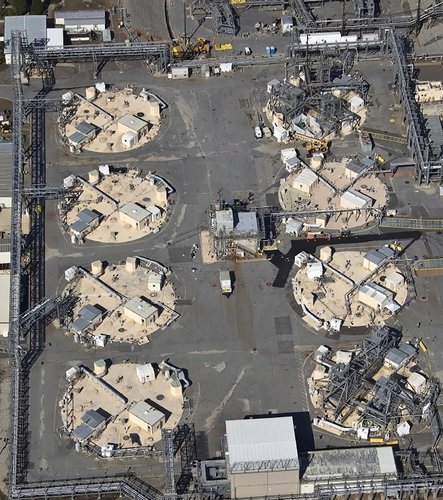U.S. Department of Energy officials have released a new plan to address mercury contamination at the Oak Ridge Reservation in Tennessee and Savannah River Site in South Carolina. It advocates for research and the development of technologies that could resolve key technical uncertainties with mercury in environmental remediation, the deactivation and decommissioning of facilities, and processing waste in tanks.
The Oak Ridge Reservation and Savannah River Site both used mercury in industrial-scale processes. At the Oak Ridge Reservation, large quantities of mercury were used at the Y-12 National Security Complex from the early 1950s until the early 1960s. During the peak period of operations, according to estimates from the Oak Ridge Office of Environmental Management, or OREM, 700,000 pounds of a total 20 million pounds of mercury that were used were released into the surrounding environment.
Ongoing mercury abatement and remediation efforts at Y-12 that began in the 1980s have decreased overall mercury releases to the environment, the DOE Office of Environmental Management, or EM, said in a May 31 newsletter.
But elevated concentrations remain in certain water, soil, and facilities, federal officials said.
The DOE Office of Environmental Management is already implementing recommendations from the new plan, “Technology Plan to Address the EM Mercury Challenge,” to reduce the mercury contamination, the newsletter said. The Oak Ridge Office of Environmental Management is designing a mercury treatment facility that officials expect will significantly reduce mercury migration from the Y-12 National Security Complex into the Upper East Fork Poplar Creek.
OREM is also developing plans to build a research station along Lower East Fork Poplar Creek, where ecological studies will focus on reducing methylmercury concentrations in fish, the newsletter said. Methylmercury, an organic form of the element, is especially toxic. It damages the nervous system, is quickly absorbed but slowly excreted, and accumulates in fish and other organisms.
SRS has used mercury for decades as a catalyst for dissolving aluminum cladding during nuclear separation processes and in other chemical processes. Mercury has not been released to the environment from these processes; rather, an estimated 60,000 kilograms of mercury is in high-level waste tanks and throughout the liquid waste system.
Planned research and technology development projects at Savannah River Site will improve mercury removal efficiency in the site’s liquid waste system, the newsletter said.
It said research and the development of technologies related to mercury contamination have been identified by the DOE Office of Environmental Management as critical to completing its mission more safely, efficiently, and cost-effectively.
The new plan recommends analytical and screening methods for mercury; approaches to stabilize mercury in debris, soil, and aquatic environments; determination of the chemical form, or species, of mercury in high-level radioactive waste liquids and sludges; processes to convert mercury from one form to another to help remove it or safely stabilize it; and improved understanding of mercury speciation and reaction mechanisms in chemically complex tank waste.
Two research areas proposed in the plan are the formulation of grout, a mortar, to stabilize mercury-bearing wastes and alternative methods for assessing the leachability of waste forms, or their ability to allow a material to percolate through something.
In addition to laying out technical recommendations, the plan emphasizes that EM must continue to demonstrate leadership in its partnerships with other agencies, institutions, and industries engaged in mercury-related research, technology development, and operations, the newsletter said.
“EM is pursuing new technologies to stabilize subsurface mercury contamination in the form of insoluble minerals that can safely remain in the ground, and it is assessing mercury contamination and removal in building materials such as concrete and steel,” the newsletter said. “Planned research and technology development projects at SRS will improve mercury removal efficiency in the site’s liquid waste system.”
Prepared by representatives from Oak Ridge and Savannah River national laboratories, and EM headquarters in consultation with DOE site representatives, the plan is based on input from experts from DOE sites and national laboratories, industry, academia, and other federal agencies, who shared information about mercury contamination, remediation strategies, recent research and technology assessments, and lessons learned.
Read the full plan here.

Planned research and technology development projects at Savannah River Site will improve mercury removal efficiency in the site’s liquid waste system. (Photo by DOE)
Copyright 2016 Oak Ridge Today. All rights reserved. This material may not be published, broadcast, rewritten, or redistributed.

Leave a Reply